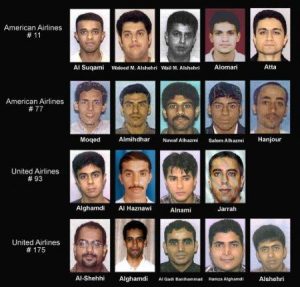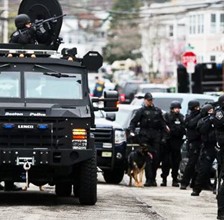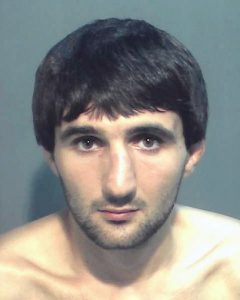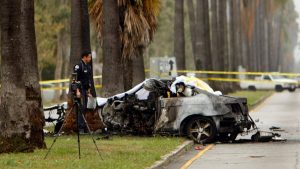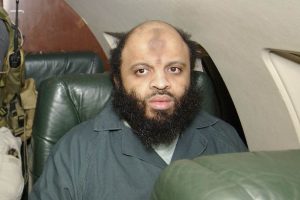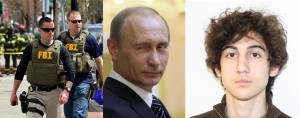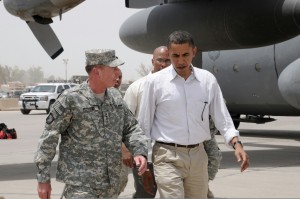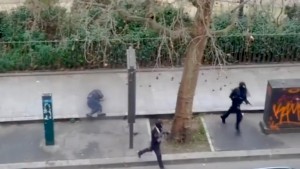On September 20, 1963, two months before President John F. Kennedy was gunned down in Dallas, a highly decorated Army veteran named Richard Case Nagell walked into a bank in El Paso, fired two shots into a wall from a revolver, and went outside to await arrest. There was speculation, even by the officer who put him in handcuffs, that for some reason he wanted to be locked up. Nagell was charged with attempted bank robbery. Only later would he indicate to the FBI that he feared being implicated in an “inimical act” — one that involved accused JFK assassin Lee Harvey Oswald.
119 éléments, page 1 (de 2)
How to Avoid Being Linked to the JFK Assassination: Get Yourself Locked Up
Codebreakers and Killers: CIA Covert Ops and the JFK Assassination
Breaking: National Archives Releases Yet Another 3,500+ JFK Files
Memo to CBS on George W. Bush: Dan Rather Got It (Mostly) Right
Anatomy of a CIA Assassination: How it Went Down
National Archives Releases 10,000+ More JFK Files
Anatomy of a CIA Assassination, Part 1
The JFK Files: New Light on Oswald and Mexico City
National Archives Releases 13,000+ JFK Records
The CIA Flips Off America
National Archives Releases 676 JFK Files
Trumped: The Mandate, the Media, and New Clues Amid the JFK Document (Un)-Dump
Exclusive: National Archives Reveal Missing Document Count to WhoWhatWhy
What Happened Thursday to the JFK Records?
Trump Delays JFK Files, Releases Some
JFK Files Release — National Archives Chaos?
Long-Classified JFK Assassination Records to Be Released Today
Classic Who: GHW Bush and the JFK Assassination
The Murder of John Kennedy’s Mistress, Part 3
Kennedy Assassination: Evidence Seen by JFK’s Doctor Suppressed
Navy Doctor: Bullet Found in JFK’s Limousine, and Never Reported
The Murder of John Kennedy’s Mistress, Part 2
JFK Had Ordered Full Withdrawal from Vietnam: Solid Evidence
A Decade After Massacre, Blackwater Founder Buddies Up with President
The Murder of John Kennedy’s Mistress, Part 1
Politico’s Challenge to JFK Orthodoxy That Isn’t
2017 JFK Document Release Shows Former Intelligence Analyst Got It Right
Dallas Mayor During JFK Assassination Was CIA Asset
The Devil’s Chessboard: Allen Dulles, the CIA, and the Rise of the American Secret Government
Watergate and the Downing of Nixon, Part 5
Watergate and the Downing of Nixon, Part 4
A Bad Blueprint: Intelligence Agencies Coopting Private Enterprise
George H.W. Bush Is 93 Today
Watergate and the Downing of Nixon, Part 3
We are running
New Perspective on King Assassination
How the FBI Got Tsarnaev’s Friend to Turn on Him
Why CIA’s Richard Helms Lied About Oswald: Part 3
The CIA, Mafia, Mexico — and Oswald, Part 6
The CIA, Mafia, Mexico — and Oswald, Part 5
The CIA, Mafia, Mexico — and Oswald, Part 4
The Mystery of the Constant Flow of JFK Disinformation
The CIA, Mafia, Mexico — and Oswald, Part 3
The CIA, Mafia, Mexico — and Oswald, Part 2
The CIA, Mafia, Mexico — and Oswald, Part 1
PoppyLeaks, Part 5
PoppyLeaks, Part 4
PoppyLeaks, Part 3
Introducing the WhoWhatWhy Blog
PoppyLeaks, Part 2
PoppyLeaks, Part 1
Michael Hand, Fugitive Who Ran Scandalous CIA Front Bank, Found Alive in U.S.
RussRant: The Poppy Coverup Book?
Welcome to the Circus — Hillary and the Benghazi Committee
JFK Assassination Plot Mirrored in 1961 France: Part 3
JFK Assassination Plot Mirrored in France: Part 2
JFK Assassination Plot Mirrored in 1961 France: Part 1
Crucial Background to New Redford Movie on Bush and Rather, Part 2
Crucial Background to New Redford Movie on Bush and Rather, Part 1
New Book on CIA Master-Plotter Dulles, Sneak Peek: Part 3
New Book on CIA Master-Plotter Dulles, Sneak Peek: Part 2
New Book on CIA Master-Plotter Dulles, Sneak Peek: Part 1
RussRant: Ben Carson Gets Boston Bombing Wrong
Who Caused Europe’s Refugee Mess? Why, We Did!
Were Saudi Royals Witting to 9/11 Attacks? Russ Baker Guests on Thom Hartmann Radio
Classic WWW: The Untold Saudi Royal Connection to 9/11
Visas for Al-Qaeda, Part 3: Backstabbing
Visas for Al-Qaeda, Part 2: Treachery
Visas for Al-Qaeda, Part 1: A Sordid Tale
Classic WHO: Must-Watch Video—Secret Service Agent Pulled off JFK Car
Classic WhoWhatWhy: Only “Lone Wolves” Commit Terror?
Classic WhoWhatWhy: Police State Gears Up
Outside the Box Video Series: The Power of Nightmares
Outside the Box Video Series: The Century of the Self
Out-of-Control FBI to Former Head of 9/11 Investigation: Butt out!
The Unexplained Connection Between the FBI and Two Muslim Friends Killed by Law Enforcement
The Lincoln Assassination and Cover-Up: Part of an On-Going Story
New FBI Tactic Hints at Big DC Cover-up of Saudi 9/11 Funding
WhoWhatWhy Live from the Opening of the Boston Bombing Trial
America’s Awful Truth That’s Too Hard to Hear
Car Hacking Report Refuels Concerns About Michael Hastings Crash
American Pilot Reveals Al Qaeda’s Early Airborne Assassination Ambitions
WhoWhatWhy’s 2016 Presidential Campaign Promise to You
BREAKING: Appeals Court Will Hear Tsarnaev’s Change of Venue Request
Who’s Really Benefiting from the Alleged Chinese Hack Attacks
Explosive Saudi 9/11 Evidence Still Ignored By Media
Murder or Suicide: The Deep Politics of A Death in Argentina
The Lost and “Found ID” Oddity in Terror Cases—Stupid or Sinister?
Why Russia Matters to the Boston Bombing Suspect’s Defense
Barrett Brown’s Day of Reckoning
Closing Off The Courtroom: Latest from the Boston Marathon Bombing Trial
Careless Whispers? Petraeus May Be Headed for Prosecution
Careless Whispers? Petraeus May Be Headed for Prosecution
Boston Marathon Bombing Suspect’s Alleged Boat Confession May Not Float
Boston Marathon Bombing Suspect’s Alleged Boat Confession May Not Float
Paris and Boston: That Other, Missing, Comparison
Paris and Boston: That Other, Missing, Comparison
Latest from the Boston Marathon Bombing Trial: Our News Feed
The Boston Bombing Trial Starts, But Answers Aren’t on the Docket
back to top


